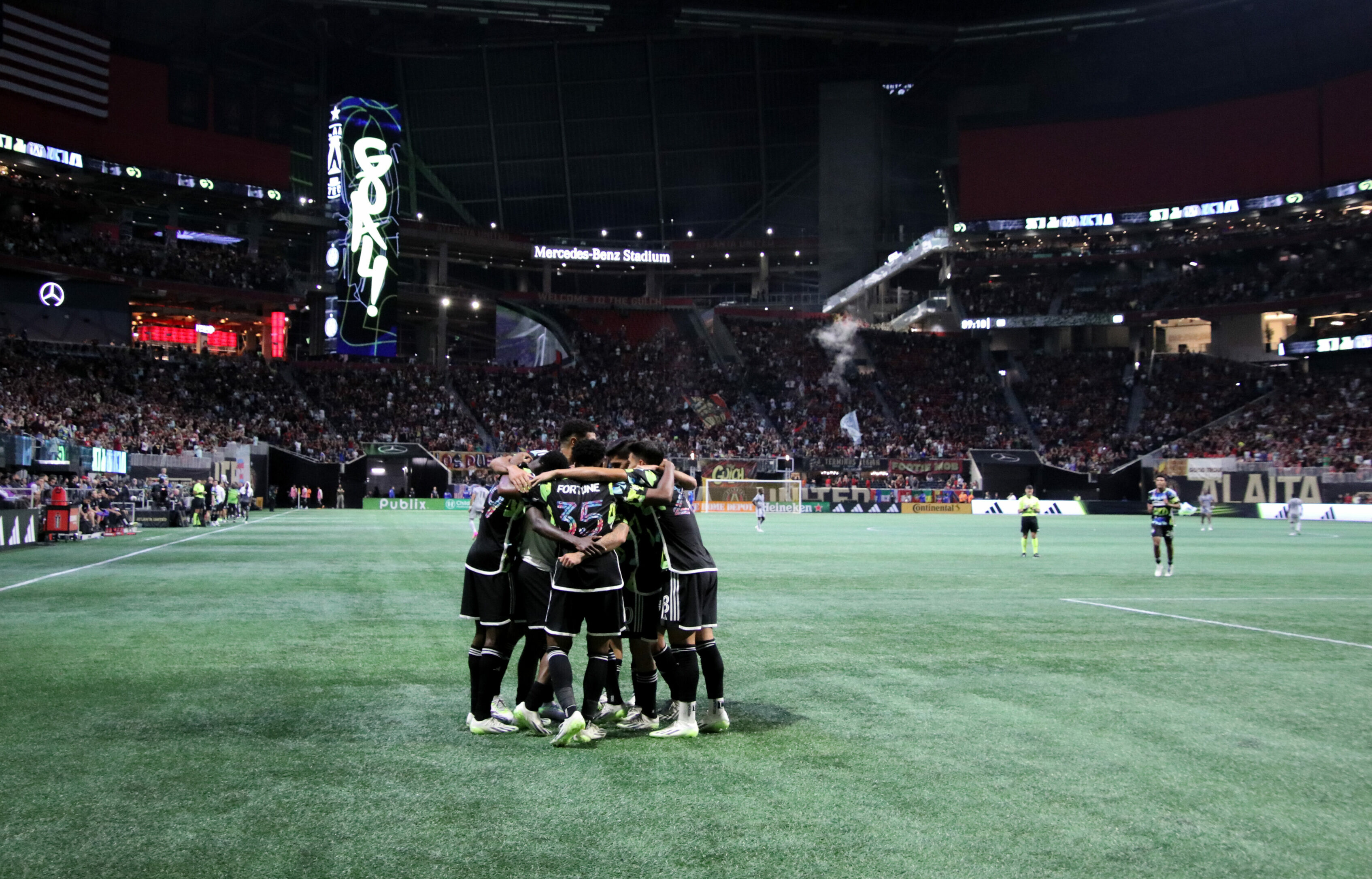
FIFA officially announced on Feb. 4 Atlanta will be one of sixteen host cities for the next World Cup. For the first time ever, FIFA will have an entire continent host matches in Mexico, Canada, and the United States.
The city of Atlanta, among the other host cities, is expected to be flooded with fans, athletes, and tourists when the competition arrives in Summer 2026. Businesses in host cities have already started their preparation, seeking to accommodate tourists from all over the world. Of these many projects, the biggest lies at Mercedes-Benz Stadium as FIFA requires all matches in the World Cup must be played on a natural grass pitch, forcing eight stadiums to switch from artificial turf including Atlanta’s Mercedes-Benz Stadium.
MBS was opened to the public in August 2017, when the Atlanta Falcons hosted the Arizona Cardinals in an NFL preseason game. Since then, home games for both Atlanta United and the Falcons have been played on the artificial turf field inside the stadium.
In 2023, there were multiple instances in which Atlanta United played at MBS within 24 hours of an Atlanta Falcons home game, giving a short turnaround for the grounds crew to convert the field and correct any imperfections in the pitch’s surface. With an artificial turf field, this process requires all stadium workers, and a state-of-the-art water and drainage system to smooth out the surface.
If MBS had a grass field, this would be virtually impossible, being that the grass surface would be irreplaceably damaged from the game/match the day before. This doesn’t completely wash out the idea that MBS could utilize grass in the future but would cost millions to maintain a field, in addition to the added labor and scheduling conflicts it would bring.
This begs a real question for owner Arthur Blank and MBS: Why is FIFA so adamant about playing on natural grass? FIFA, the largest governing association in the sports industry, is responsible for the health and safety of some of the most popular athletes of all time. Because turf is synthetic –composed of rubber, sand, and plastic– this makes running on turf harder on players’ joints as there is less ‘give’ causing more lower body injuries than grass would.
This controversy isn’t new and is only growing with each injury at turf stadiums, most notably among NFL players at New York Giants/Jets Metlife Stadium. Over the past 3 seasons, there have been over 17 serious turf-related injuries there, including ligament tears for NFL stars Nick Bosa, Aaron Rodgers, and Raheem Mostert. Players have been advocating for grass fields, especially for game day when they are at full speed and making their money’s worth for their respective teams.
Lloyd Howell, Executive Director of the NFLPA issued a statement following Rodgers’ Achilles tear in the Jets season opener, “The players overwhelmingly prefer [natural grass surfaces] and the data is clear that grass is simply safer than artificial turf.” Howell went on to advocate for NFL players’ safety and noted the inconsistencies with NFL owners supplying the ‘superior’ surface in natural grass whenever soccer clubs come to visit, bringing large influx of money to the stadiums.
Owner Arthur Blank has up to this point been completely against a temporary change to natural grass, even turning down the opportunity to host Lionel Messi in an Atlanta United match against Inter Miami CF. With the World Cup money in hand, we now see Blank and other executives making the switch.
